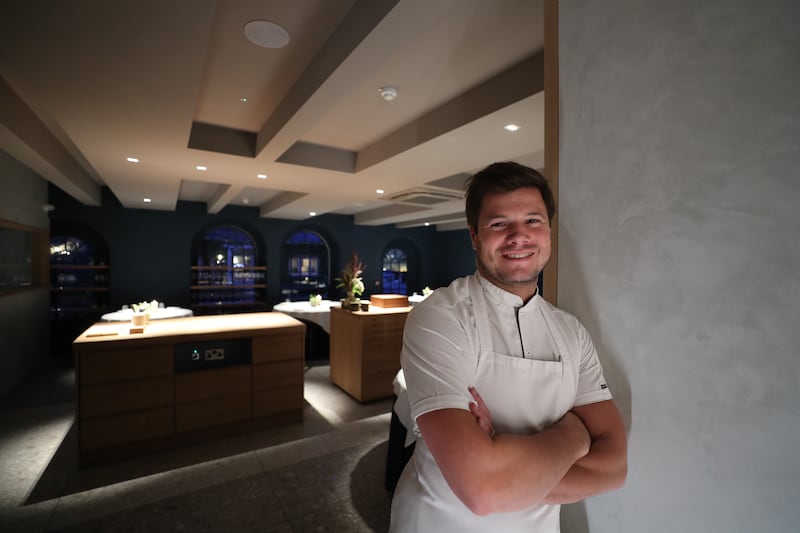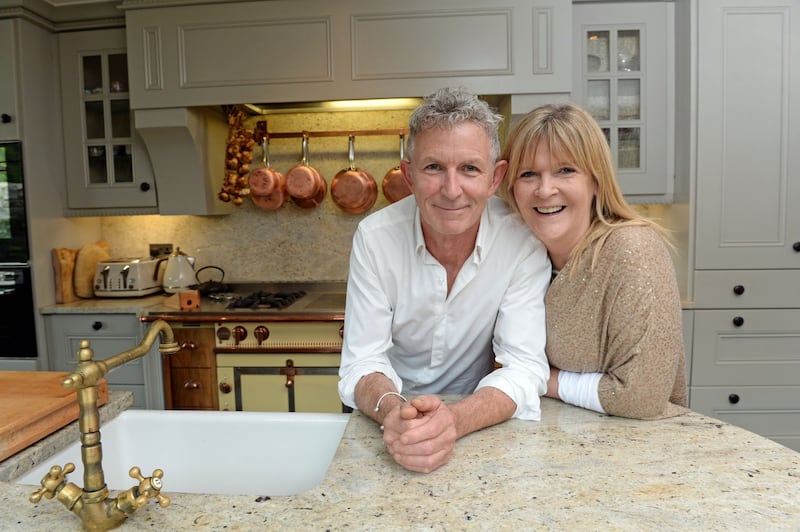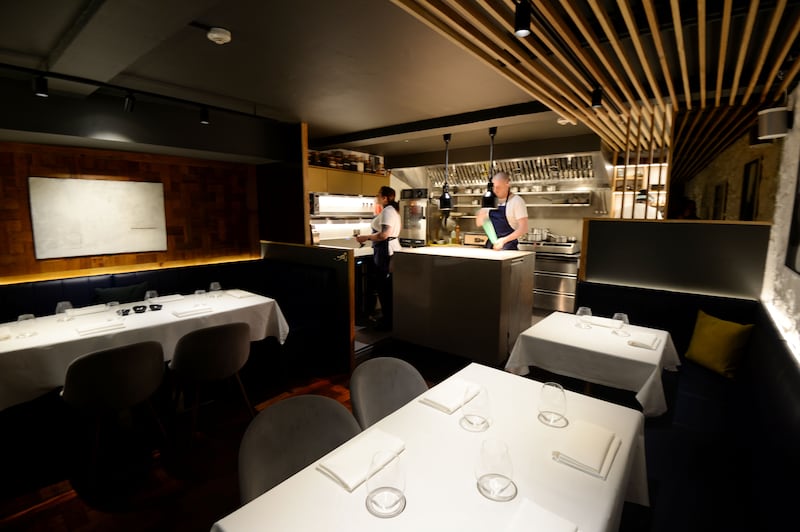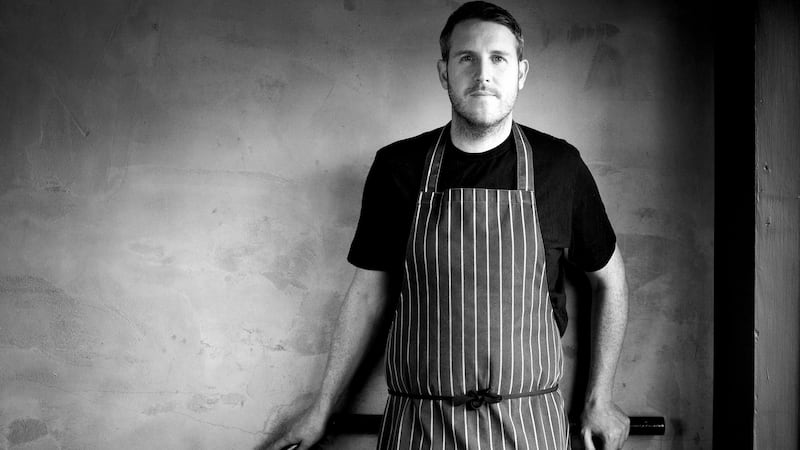An elite brigade of top-level chefs from the UK and Ireland will gather at Silverstone Circuit, a car racing track in Northamptonshire, on Monday week. But as the cocktails flow and the canapés are served, there won’t be a chef’s jacket in sight. At least not until the publishers of the Michelin Guide Great Britain & Ireland, which is staging its 2023 awards ceremony there, begin to call some of those present to the stage to accept pristine new chefs’ whites, emblazoned with either one, two or three of their coveted red-star symbols.
For the recipients of these garments, it will be a life-affirming moment. Some will be elated to have joined the firmament for the first time, or to have been promoted, while others will be relieved to have retained their star ranking. Few industry awards have the clout, and the ability to make or break careers and businesses, that Michelin does.
First published in 1900 by French brothers André and Edouard Michelin as an adjunct to their tyre manufacturing business, the guide, now published digitally only, is a global business supported by its parent company. There are more than 3,000 Michelin-starred restaurants in close to 40 countries. The inspectors, who book anonymously and pay their bill in full, have been active in Ireland since 1974, and there are currently 21 Michelin-starred restaurants, North and South of the Border.
But where there are winners, there are losers too, and post-Covid, as no deletions or demotions were announced by the influential publication during the pandemic, there is a feeling in the industry that a big shake-up may be on the cards. There was consternation late last month when the guide downgraded culinary legend Guy Savoy’s Monnaie de Paris restaurant to two stars, from the three it has held since 2002. This was one of many revisions and deletions revealed in the 2023 French edition.
READ MORE
In Ireland, much of the speculation is of a more positive nature, centred on the possibility that we might be about to see the first three-star rating since the guide began casting its eye on this country 49 years ago. Popular opinion had Dublin’s Chapter One by Mickael Viljanen and Aimsir in Co Kildare level-pegging for promotion, but the recent resignation of Jordan Bailey, chef patron at Aimsir, has cast doubt on its prospects of attaining a third star at this time. There is a spotlight too on Terre, the restaurant at Castlemartyr resort hotel in Co Cork, which opened with great fanfare last September, and for which a two-star entry into the guide has been predicted by some critics, emulating the feat attained by Aimsir in the 2020 edition.

Irish Times restaurant reviewer Corinna Hardgrave is putting her money on Chapter One by Mickael Viljanen being elevated to three stars. “Based on visiting restaurants at this level around the world, I would say that it is solidly at three Michelin star level and deserving of this accolade.” Hardgrave also predicts additions at one-star level. “The safe money is on Lignum in Galway landing a star, although there are other restaurants at this level in the country too. There’s a really exciting menu and skilled cooking in Neighbourhood in Naas, although, like D’Olier Street in Dublin, it may not be open long enough for the level of inspection required to jump straight in at one star. One Pico, Woodruff, the Dining Room at Park Hotel Kenmare and The Bishop’s Buttery at Cashel Palace Hotel also merit attention.”
There will be at least one deletion from the Irish list, however. In January, Enda McEvoy and Sinead Meacle, owners of Loam in Galway, announced that the one-star restaurant would not be reopening in its current location, and that they were working on a new project. But there could well be more, and the recent overhaul of the French listings can be taken as a clear signal that the gloves are off post-Covid.
The loss of a star can be devastating, for the business and for the chef. The death by suicide of French chef Bernard Loiseau in 2003 was thought to be linked to speculation that his restaurant would lose one of its three stars, having already been downgraded by the rival Gault-Millau restaurant guide. In 2019, another French chef Marc Veyrat, took Michelin to court and lost when they stripped his restaurant La Maison des Bois of one of its three stars.
When we got our first star, the fact that we got it in the market, with no toilet, serving on IKEA plates, broke all my preconceptions of what Michelin was
— Damien Grey
In Ireland, Kevin Thornton’s eponymous restaurant in Dublin made its debut in the 1996 edition of the guide, nine months after opening, and held its listing until 2015, moving up to two-star for five of those years. But when the 2016 edition was released, the unthinkable happened, and Thornton’s was not included. The chef learned of the decision when his wife and business partner Muriel read a tweet from a food writer. At the time, he said that the decision was “shocking and bizarre” and later described losing the star as being “like a stab in the heart”.
The couple took the decision not to renew their lease and Thornton’s closed in 2016. “You put your heart and soul into this every single day and when someone criticises you and says you are not good enough, it feels like you have failed,” he said at the time. But now, doing private dining and running a boutique cookery school with Muriel from their Dublin home, he seems glad to have left the star-chasing behind.

“After 40 years of working in the army-style discipline of a high-end restaurant, where every fibre of being and each waking thought is obsessively and, with great pride, focused on the maintenance of standards within the four walls of the kitchen, it truly feels like a gift to have been given the opportunity to breathe, to recalibrate and to redirect our creativity in to other facets of our lives,” Thornton says.
Not all chefs seek the approval of the Michelin inspectors, however. Oliver Dunne had a star for nine years for his Malahide restaurant Bon Appetit, before effectively ruling himself out of contention in 2015, when he completely changed the style of the restaurant, embracing a more casual approach to dining.
“From the time I first won the star, nothing mattered more, and I mean absolutely nothing. And now, 10 years later, I look back in amazement. It is now so irrelevant and unimportant to me. It’s like two different people, like I don’t know who that Oliver Dunne was,” he said at the time.

But for many who wear the white jacket and cook for a living, winning a Michelin star is the pinnacle of ambition. Chef Damien Grey, whose Liath restaurant in Blackrock Market in South Dublin was promoted to two-star level last year, made his one-star debut in the 2017 edition of the guide, when his restaurant was called Heron & Grey and run in partnership with Andrew Heron. “I’ll never forget it, it was electric,” Grey says of his first invitation to a Michelin awards ceremony in London.
The restaurant’s success dispelled the commonly held belief that Michelin was all about crystal glasses, heavy silverware, fancy linens and white glove service. “When we got our first star, the fact that we got it in the market, with no toilet, serving on IKEA plates, broke all my preconceptions of what Michelin was supposed to be. Michelin have said for a very long time, it’s all about the food. Well, we proved that, we absolutely proved that,” Grey says.
Winning a Michelin star can dramatically alter a restaurant’s fortunes, and Grey’s reservations book filled up immediately for the following 12 months. “We had something along the lines of around 4,000 emails at the time, and the phone just constantly rang. Michelin is good for business. It’s absolutely great for business because it’s a worldwide guide, and it’s a trusted guide,” Grey says. But there can be downsides too, with high expectations to be met. “People were coming in thinking they were going to get an El Bulli experience and we had to say to them, no, that’s not what it is,” Grey explains.

Barry Fitzgerald’s restaurant, Bastible, in Dublin 8, was awarded a star for the first time last year, and although Fitzgerald says it has been good for business, especially early in the week when it might otherwise not have been busy, he too has found that some diners now come with preconceptions. They may be surprised, perhaps, by the simplicity of the diningroom, or the fact that the wine list isn’t several volumes long. “There’s just a bit more pressure, more expectations that you have to meet. We are still on the more casual end of fine dining, and don’t really plan to change that. We are proud of what we do.”
The elevation last year to two-star status has significantly changed the customer base at Liath. “Our international clientele is roughly around 38 per cent of our business now,” Grey says. The concept of undertaking a journey specifically to eat at a restaurant is at the core of the Michelin star system, supporting its tyre sales business. According to the publication, one star identifies “high quality cooking, worth a stop”, while two stars denote “excellent cooking, worth a detour”, and three stars signifies a restaurant with “exceptional cuisine, worth a special journey”.
Michelin may have its flaws, but it is still the best at what it does
— Greg Bowe
Derry Clarke’s restaurant L’Ecrivain on Baggot Street, Dublin 2, had a Michelin star from 2004 until he closed it in 2021. Clarke found that being awarded a Michelin star brought him regular business from beyond Ireland. “There is a cohort of people out there, especially from Britain, that have a kind of a bucket list thing where they try to go to every Michelin star restaurant,” Clarke says. “People would come over specially, fly over for a lunch or dinner.”
Irish couple Greg and Michelle Bowe, who compile food and drink quizzes for irishtimes.com, have a website called The Greedy Couple, where they rate and review restaurants they have eaten at around the world. “At a guess, we have probably eaten at around 60 to 70 Michelin starred restaurants across Spain, France, Italy, Denmark, Germany, Portugal, the US and Hong Kong, of which just under 20 were three stars at the time,” Greg says. “We always plan our holidays around dining... wherever we go we try to seek out great places to eat and often this would involve Michelin-starred restaurants.”
In their experience, the guide is a reliable reference source. “In general, Michelin are quite consistent, considering how subjective dining is,” Greg says. “People can be quick to bash Michelin when their ratings do not align with their own opinion, but no one actually knows what the experience of their inspector was in any restaurant, nor the reasons for their ratings. Michelin may have its flaws, but it is still the best at what it does.”
Others believe that there are inconsistencies in standards between regions, and say that Michelin is too slow to award stars in Ireland to restaurants that would have them in other countries. An industry insider who asked to remain anonymous says that the playing field has levelled in Europe, at least.
“I don’t actually think there is a gap right now between Ireland, and the UK or other European countries – although I do think the gap between us and some other regions, such as areas in the US, is still significant. For example, I can think of least half a dozen restaurants in NYC [New York City] over as many years with stars that would not have one here,” according to the industry insider.
“The guide has never been more engaged with Ireland. The amount of inspections and exploration was obvious through social media. They may appear to be slower to give something in this country a star for a very casual or a la carte place, like a Barrafina or a Sabor [in London]. Saying that, I don’t think there is anything as good as Barrafina or Sabor in that sense in Ireland, and that’s the whole point really. Is the restaurant good enough? A question not asked enough in my experience.”
You don’t cook for the stars. That’s the golden rule
— Damien Grey
As the annual Michelin awards ceremony rolls around again, not even those at the top of their game are immune from a little anxiety over what might be to come. Charles Guilbaud is assistant manager at Restaurant Patrick Guilbaud in Dublin, which his father established in 1981. The restaurant has had two Michelin stars for 27 years, having earned its first in 1989 and being promoted in 1996. “Dad was always saying to me, ‘don’t worry about keeping your standards up, just try to do better all the time’,” Guilbaud says. “It is a bit of pressure. Around this time, everybody’s a bit worried ... no one really wants to lose a star.”
Gaining an additional star, were that to happen, could bring challenges too. “I know it’s something that for the guys in here, Guillaume [Lebrun, executive chef] and Patrick and Stephane [Róbin, restaurant manager], would be the defining moment for them in their careers. But I don’t think we really focus on that,” Guilbaud says.
“I mean, we’re a business first. Things have to work financially, we want to be here not only tomorrow, but a long time down the road, and changing our model to a three-star model might be a little bit reckless. We just try to do what we can, the best that we can, and if Michelin really appreciate us, then great.”
Grey agrees. “You don’t cook for the stars. That’s the golden rule,” he says. “You cook for your customer. Michelin really don’t want you to cook for them, they want you to cook for your customers. Don’t try to impress them, just do what you do and do it well.”
Q&A: Michelin in Ireland
The head of selection for the Michelin Guide United Kingdom and Republic of Ireland, who asked to remain anonymous, explains how the inspectors work, and how they decide what restaurants make it into the guide
How often do Michelin inspectors travel to Ireland, and how is it decided which restaurants will be visited?
Gastronomy in Ireland continues to evolve at a pace, so the team has to keep a close eye on what’s happening, so we visit frequently throughout the year. There aren’t many weeks that we don’t have an inspector either planning or undertaking a trip to Dublin, Belfast or further afield. The inspectors use their extensive experience to decide where to eat. They’re looking for great cooking so, whilst it’s easy enough to discover new restaurants, the inspectors have to sample the cooking to determine if it’s good or not and worth [it] to add these restaurants to the Michelin Guide selection.
Where do the inspectors gather their information and insights on the Irish restaurant scene?
Research is a crucial aspect of an inspector’s job, the web and social media are valuable tools, but we also get recommendations from our followers on guide.michelin.com and our Michelin app and, of course, from the restaurateurs themselves. However, there’s no substitute for walking the streets in the hope of coming across something new.
Is there ever an occasion when an inspector isn’t able to secure a reservation at an Irish restaurant that has attracted their attention?
Sometimes it can be a real challenge to secure a table in a restaurant, but they are a tenacious lot and plan ahead. It’s not unknown for inspectors to be poised on their phone with a credit-card number on hand ready for the moment a restaurant releases its next reservations, even if that’s at midnight!
What measures do the inspectors take to ensure that their visit is an anonymous one?
We are lucky that we can draw from a team of inspectors from across the globe – Europe, the US and Asia. This helps us ensure that the inspectors experience a restaurant in exactly the same way as everyone else does, they don’t want special attention or to stand out. They always pay their bill, never announce themselves and rarely visit the same restaurant twice.
How does the guide work?
The guide’s inspectors, who undergo intensive training, address five criteria when evaluating a restaurant: “Quality of the ingredients used, mastery of flavour and cooking techniques, the personality of the chef in his cuisine, value for money and consistency between visits.”
Restaurants with stars attached to their name are not the only ones included in the guides. In addition, the inspectors compile a list of places that they deem worthy of inclusion, while not, or not yet, at star standard. Within this selection, there will be places that they deem to offer great value for skilful cooking of quality ingredients. These are awarded the Bib Gourmand, named after Bibendum, the Michelin Man.
“Since 1997, our best value for money restaurants – offering a three course meal at a reasonable price – have been pointed out using a special award: the Bib Gourmand. The price limit for Bib Gourmand consideration varies from country to country, depending on the cost of living, but the inspectors are searching for the same high quality, wherever they happen to be in the world,” according to the guide.
Since 2020, the guide has also awarded green stars to restaurants that have outstanding sustainability credentials.
Restaurants in the Republic of Ireland and Northern Ireland with Michelin stars in the 2022 Guide
Two-star:
- Aimsir, Co Kildare
- Chapter One, Dublin
- Liath, Co Dublin
- Restaurant Patrick Guilbaud, Dublin
One-star:
- Aniar, Galway
- Bastible, Dublin
- Bastion, Co Cork
- Campagne, Kilkenny
- Restaurant Chestnut, Co Cork
- Dede, Co Cork
- Eipic, Belfast
- Glovers Alley, Dublin
- Lady Helen Restaurant, Co Kilkenny
- The House at Cliff House Hotel, Co Waterford
- Ichigo Ichie, Cork
- Loam, Galway
- The Muddler’s Club, Belfast
- The Oak Room at Adare Manor, Co Limerick
- Ox, Belfast
- Variety Jones, Dublin
- Wild Honey Inn, Co Clare





















